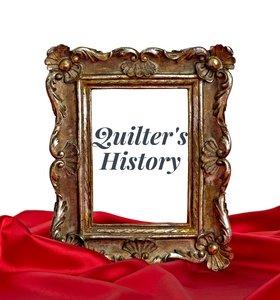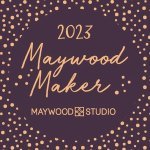- The history of quilting can be traced back at least to medieval times. Early examples exist from Europe, India and the Far East.
- The word 'quilt' has been linked to the Latin word 'culcita', meaning a bolster or cushion, and seems to have first been used in England in the 13th century.
- The earliest quilting was used to make bed covers: quilts are often mentioned in medieval inventories and frequently became family heirlooms.
- The Tristan Quilt survives from 13th-century Sicily. It depicts 14 scenes from the medieval legend of Tristan and Isolde – lively depictions of battles, ships and castles – and is one of the earliest surviving examples of 'trapunto', or stuffed quilting, (from the Italian 'trapuntare', to quilt). Circa 1360 – 1400, Sicily
- Because items such as bed covers involve large surface areas, quilt making is often associated with social occasions where many people share the sewing. Particularly in North America, there is a tradition of a quilt-making 'bee' for a girl about to get married, with the aim of hand stitching a whole quilt in one day.
- In Britain, quilting was most popular in the 17th century, when it was used for quilted silk doublets and breeches worn by the wealthy and later for petticoats, jackets and waistcoats.
- Quilts were produced professionally in major towns and cities – London, Canterbury and Exeter are examples.
- Quilts were also imported. Quilted Indian bed covers made from chintz fabric (Indian painted and dyed cotton) were very popular for both the British and Dutch markets in the 17th and 18th centuries.
- An examination of colonial American probate estate inventories reveals very few quilts, and those only in wealthier households. Most settlers relied on heavier loomed coverlets and “bed rugges”.
- The earliest surviving American quilts tend to be wholecloth calamancos, in which the glazed wool top was layered with wool batting and a home-woven linen or linsey-woolsey back, then closely quilted in plumes and other decorative motifs.
- In the pre-Revolutionary American colonies, England and France supplied most if not all fabrics, although clothing and linens were often constructed at home. By the early 19th century, American-produced cotton fabrics were being manufactured cheaply in a large array of prints, helping to make quilts more affordable. The quilts from this period were often made medallion style, with a variety of elaborate borders surrounding a patchwork center.
- The invention of the sewing machine in the 1840s changed household sewing. I.M. Singer introduced a pay-by-installment plan which allowed many access to a treadle (foot pedal) machine.
- In the 1840s a new style emerged: the Baltimore Album or Friendship quilt. This quilt was elaborately appliquéd with floral and other figures. Typically, each block had a different design.
- 1880 was the first time in recorded history an electric motor was put on a sewing machine. These motors were added to retrofitted sewing machines, invented and implemented by Philip Diehl, a contractor who worked for Singer.
- The Great Depression of the 1930s popularized feedsack quilts. Cloth sacks that held animal feed, flour, and other staples were packaged were produced in a wide variety of cheerful prints. These would be repurposed into quilts after the original contents were used.
- During the Great Depression period quilters shared patterns from weekly newspaper columns. The Kansas City Star featured more than 1,000 designs from 1921 to 1961. Companies like the Ladies Art Company, Aunt Martha, and Grandmother Clark offered patterns, supplies, and kits of precut fabric to the public.
- Singer introduced the world’s first computer-controlled machine, the Touchtronic 2001 in 1978.
- America’s bicentennial in 1976 sparked a quilt revival in America. The movement centered on the idea of getting back to one’s roots and traditions.
- In the 1970’s the Whitney Museum of American Art in New York City displayed quilts in a new way. Instead of looking for “fine museum quality quilts”, quilts with the “greatest visual interest and impact” were shown, hanging up instead of lying flat, next to abstract art. The statement this made was that quilts were more than just craft alone – they were art.
- Tools we use today such as rotary cutters and cutting mats were not widely available until the 1980’s. Until then, templates were made with cardboard or sandpaper and fabric was cut with scissors.
|




